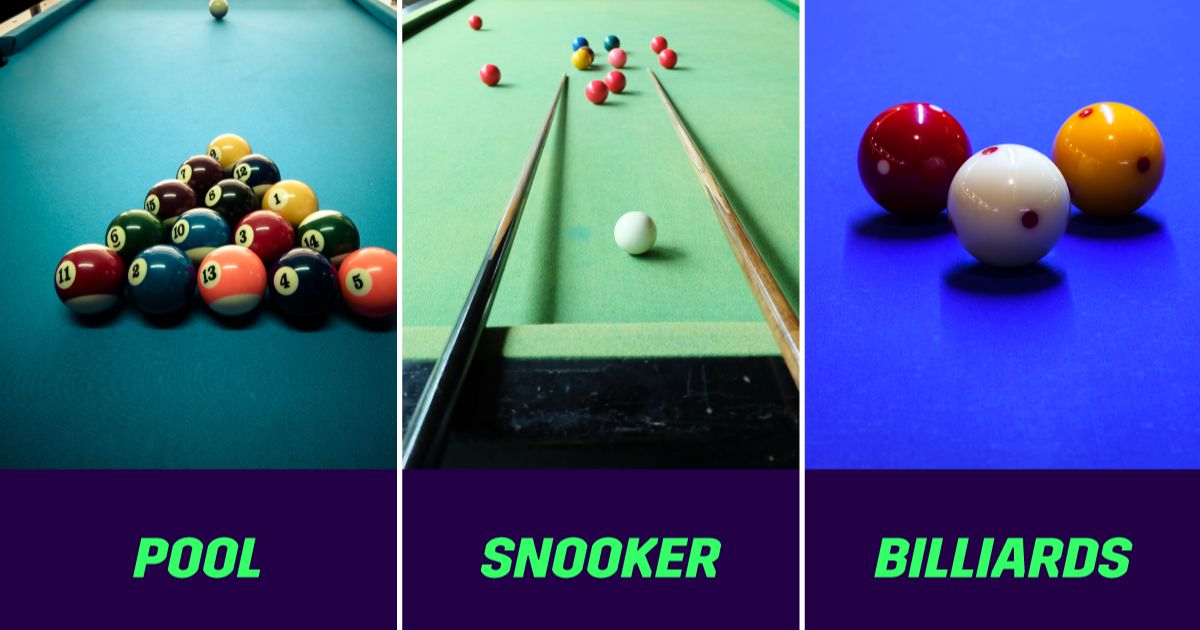If the shooter doesn’t have any object balls on the opposite side of the head string, he or she must bounce the cue ball off of one or more cushions at the opposite end of the table before it’s able to legally contact an object ball in the kitchen. By 1925, the game was popular enough for the Brunswick-Balke-Collender Company to introduce purpose-made ball sets with seven red, seven yellow, one black ball, and the cue ball, which allowed spectators to more easily see which suit each ball belonged to. The object balls include seven solid-colored balls numbered 1 through 7, seven striped balls numbered 9 through 15, and the black 8 ball. The order of the balls should be random, with the exceptions of the 8-ball, which must be placed in the center of the rack (i.e., the middle of the third row), and the two back corner balls, one of which must be a stripe and the other a solid.
While the 2 ball to the diamond on the foot rail immediately adjacent to the left corner pocket. However, in the nine-ball game a diamond shaped rack is used. Though a diamond system can be very difficult to understand, I’ll simplify it to let you know how it works and what are some formulas you can memorize to make it less complex for you to work over it. I’ll generally skid the cue off the side of the cueball, sending it wildly spinning directly into a side pocket. The cue ball will usually be a solid white, so it’s easy to identify it on the table. In short, a world-standardized rules game of eight-ball, like a game of nine-ball, is not over until the «money ball» is no longer on the table. It is the second most played professional pool game, after nine-ball, and for the last several decades ahead of straight pool. Slate tables have sturdy, ornate construction and are built to last. If any balls from a player’s suit are on the table, the player must hit one of them first on every shot; otherwise a foul is called and the turn ends.
To start the game, the object balls are placed in a triangular rack. In order to win the game, the player first designates which pocket the 8 ball will be pocketed into and then successfully pockets the 8 ball into that pocket. Otherwise (i.e., if the 8 ball is neither pocketed nor knocked off the table), the shooter’s turn is simply over, even if a foul occurs. A player (or team) continues to shoot until committing a foul or failing to legally pocket an object ball (whether intentionally or not); thereupon it is the turn of the opposing players. If the player pockets the 8 ball and commits a foul or pockets it into another pocket than the one designated, the player loses the game. This means that, no matter in which pocket the cue ball is pocketed in, the opposing player can only take the ball in hand from behind the head string. The rules on what happens when the 8 ball is pocketed off the break vary by the rules in question (see § Fouls, below). In most leagues, it is the breaker’s opponent who racks the balls, but in some, players break their own racks.
If the 8 ball is pocketed on the break, then the breaker can choose either to re-spot the 8 ball and play from the current position or to re-rack and re-break; but if the cue ball is also pocketed on the break (colloquially referred to as a «scratch») then the opponent is the one who has the choice: either to re-spot the 8 ball and shoot with ball-in-hand behind the head string, accepting the current position, or to re-break or have the breaker re-break. That player is assigned the group, or suit, of the pocketed ball — 1 to 7 (solids) or 9 to 15 (stripes) — and the other suit is assigned to the opponent. If the cue ball is pocketed at the head of the table, the shot is taken from behind the head string. Pocketing or sending the cue ball off the table is considered a scratch. The table is «open» at the start of the game, meaning that either player may shoot at any ball. Nevertheless, the rules for eight-ball may be the most inconsistent of any billiard game, as there are several competing sets of «official» rules. In pool the most popular game is the eight-ball.
If you have any questions pertaining to where and ways to use what is billiards, you can call us at our web site.





